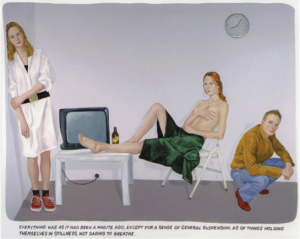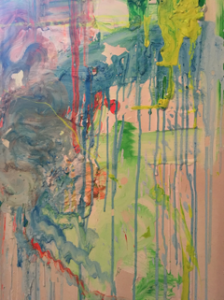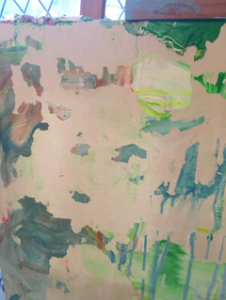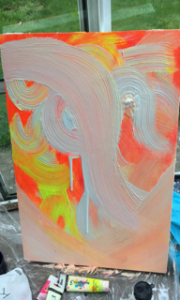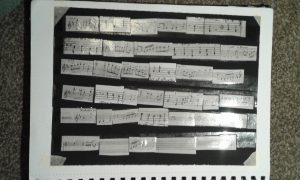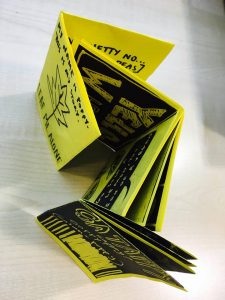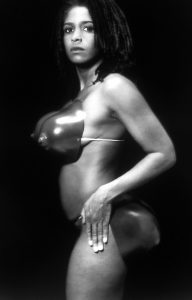Muntean / Rosenblum
Untitled [Everything was as it had been a minute ago…], 2001 [painting]
At first glance I get a very stark and bright feel from the painting. The overall ‘look’ of the image is quite flat and the only really dark values are in the green robe in the centre. This draws the eye in to that specific place in the painting, and in turn, the central figure. I find it intriguing how this arrangement of seated and standing positions look rather strange together, each figure looks as though it has been taken from somewhere else. This is reinforced by the fact that if we separate each figure they are in very ordinary positions. It has a certain ‘unnerving’ air surrounding it, a stillness that makes the viewer slightly uncomfortable. This uncomfortable feeling is exaggerated by the glare of the three figures, looking out from the surface and engaging the viewer. From the text we can tell that the artist has tried to encapsulate a feeling of stillness, a snapshot in time that gives no indication of what might happen next. I think that the artist is trying to capture an exact moment that expresses a great feeling of illusion and where very little, in terms of narrative, can be deciphered. The clock on the wall also suggests the theme of time.
I like the general composition and shape of the painting, the slight rounded edges of the image itself and the text being placed below, gives the sensation that we, as viewers, are looking into a screen, exhibit or a cell. The text below could almost be seen as mocking the little plaques that are found in art galleries and zoos, as this text contains no real ‘information’.

